Several new studies use evidence from temperature-sensitive plant species and megafauna remains to reconstruct an Arctic climate that was 6°C to 22°C warmer than today when CO2 concentrations lingered near 300 ppm.
Navigating the Arctic Ocean
William Barentsz discovered Arctic Svalbard as he sailed through an open-water Arctic Ocean using a wooden boat in early June, 1596.
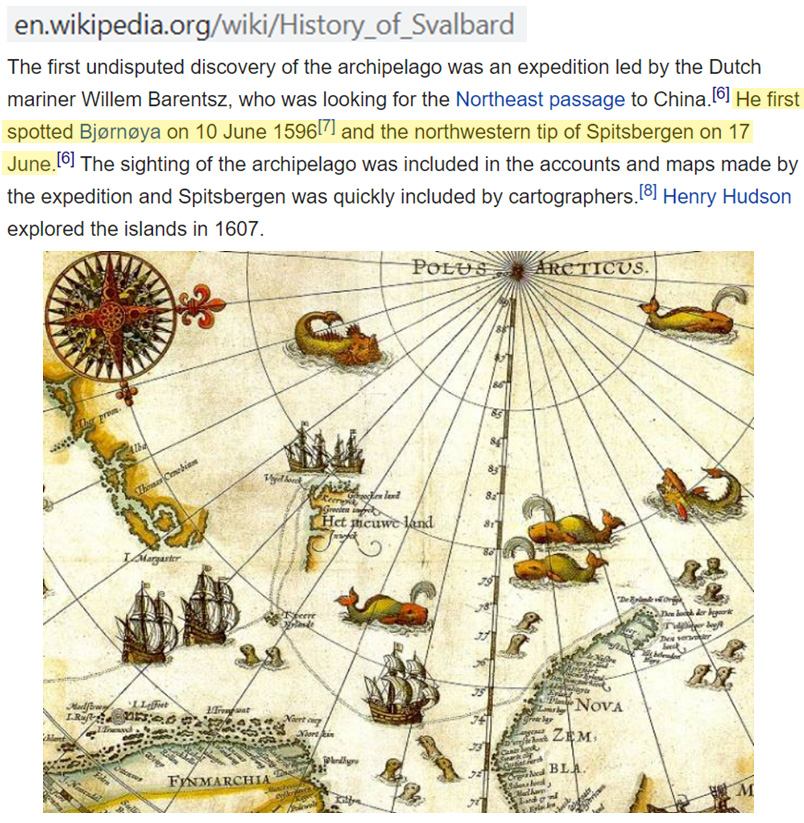
Image Source: Wikipedia
In September, 2019 (the month of the year with least extensive sea ice), 16 scientists needed to be rescued by helicopters because the massive ship they were using to study climate change couldn’t cut through the ice-covered waters near Svalbard.
In the 1500s, the Western Arctic was sea ice free for about 4-5 months of the year. Today – and steadily since 1800 – the Western Arctic is sea ice free only about 2 weeks of the year (Porter et al., 2019).
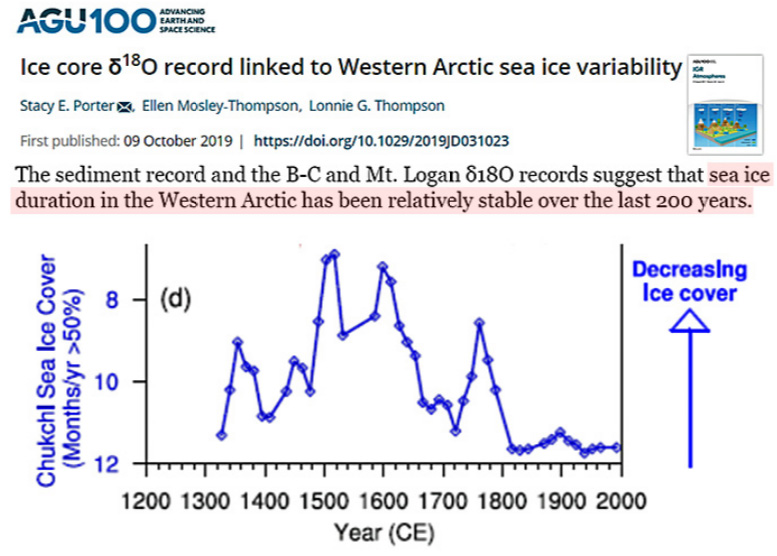
Image Source: Porter et al., 2019
In fact, according to Rosel et al., 2018, Arctic sea ice was actually thicker in 2015 (1.56 m) and 2017 (1.65 m) than it was in 1955 (0.94 m).
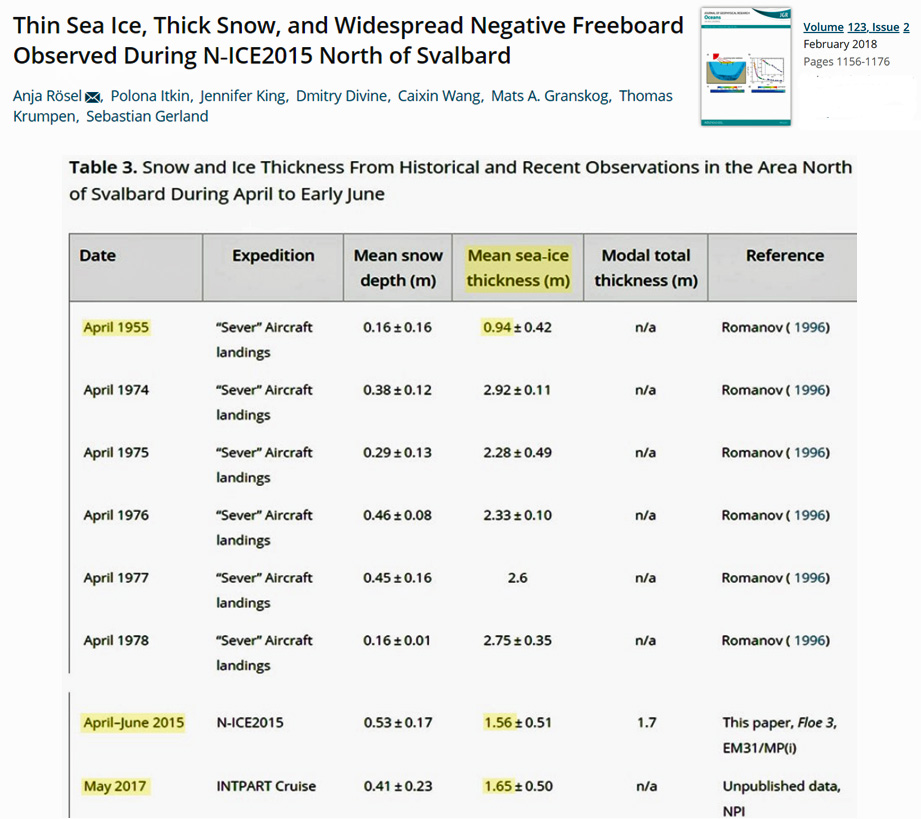
Image Source: Rosel et al., 2018
The paleoclimate Arctic record
1. Voldstad et al., 2020 A much broader distribution of thermophilous (warmth-dependent) plant species suggest the sea surface temperatures near Svalbard were as much as 6°C warmer than they are today earlier in the Holocene, which effectively means the Arctic was sea ice free throughout the year.
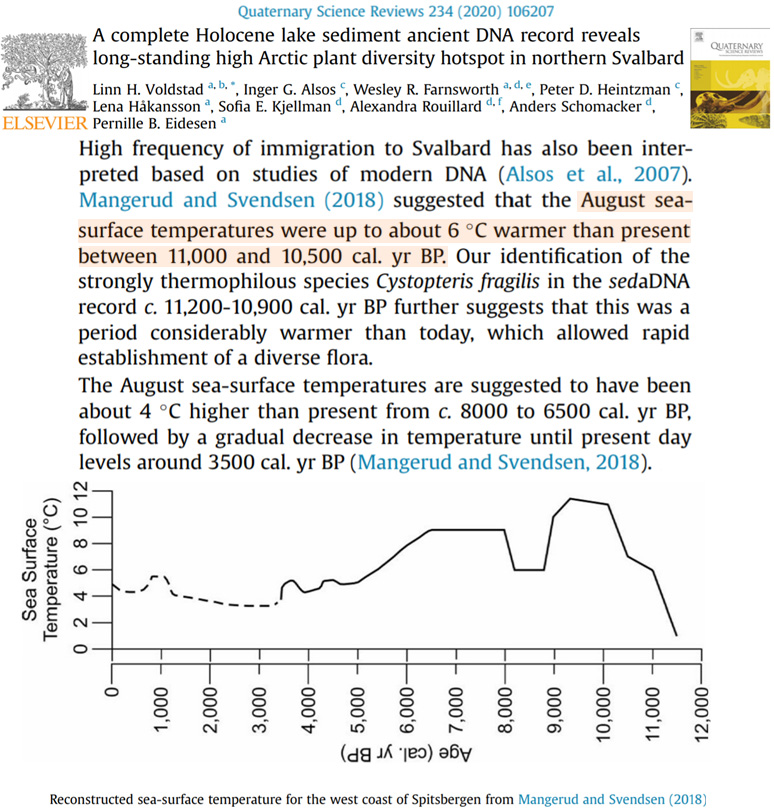
Image Source: Voldstad et al., 2020
2. Kirillova et al., 2020 About 115-100,000 years ago, “semi-dwarf” wooly mammoths thrived in an Arctic Siberia teeming with lakes, rivers, aquatic plants, grassy meadows, and forests. July temperatures were 8-10°C warmer than today’s. CO2 levels ranged between 260-280 ppm.
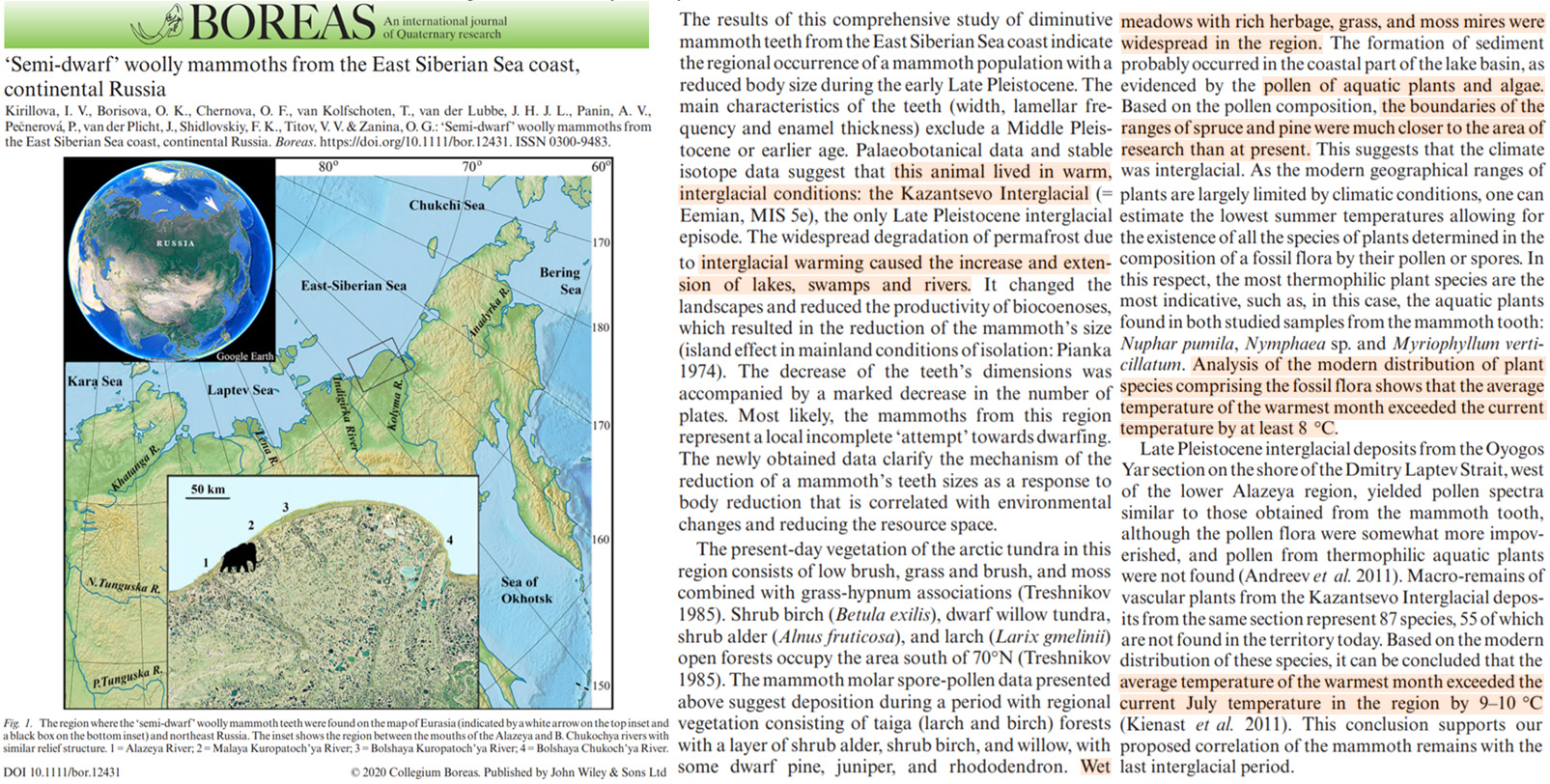
Image Source: Kirillova et al., 2020
3. Schenk et al., 2020 Plant species’ thermal tolerance limits (Finland) suggest July temperatures had already reached “near-modern” (~16°C vs. 17°C) levels 15,000 to 11,000 years ago, or during the last late glacial, when CO2 hovered near ~220 ppm CO2. By about 10,000 to 9,000 years ago, Greenland was “4-7°C warmer than today”.
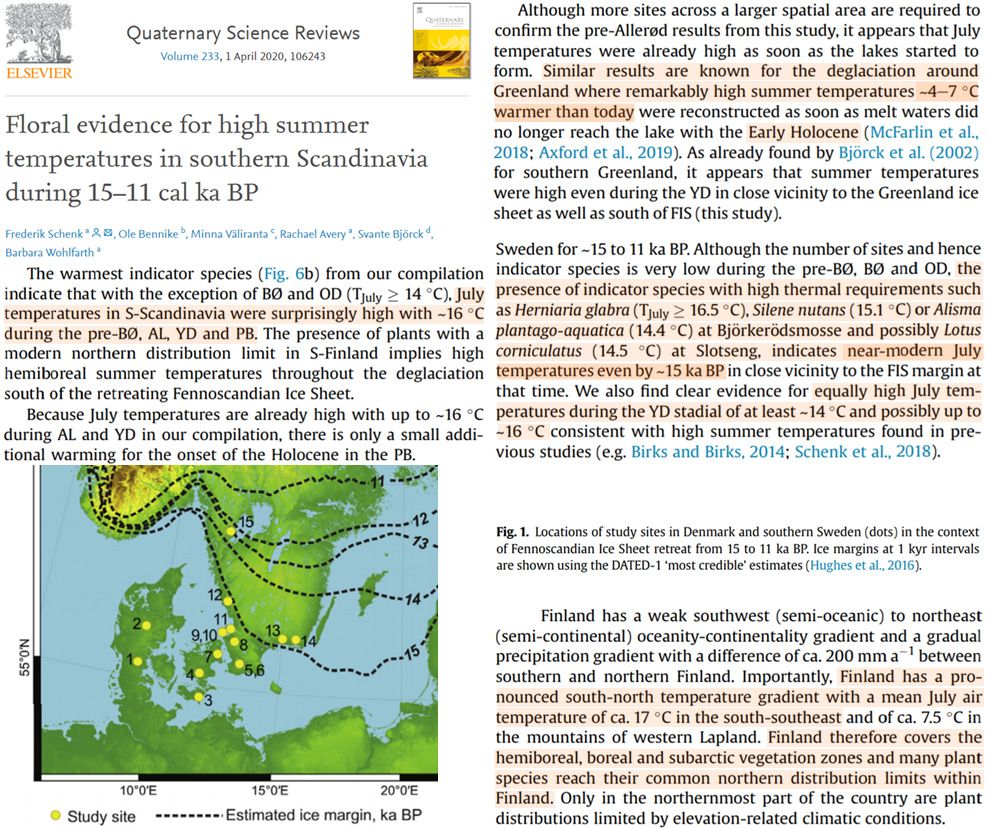
Image Source: Schenk et al., 2020
4. Fedorov et al., 2020 The Eurasian Arctic was up to 8°C warmer than today during the last interglacial (130,000 to 110,000 years ago). Extensive forests lined the Arctic Ocean coast from 10,000 to 3,000 years ago, when the region was also much warmer than today. Today’s Eurasian Arctic coast is treeless tundra. The cold-preferring collared lemming has 25% more habitat now than it did earlier in the Holocene due to today’s tundra expansion and cooler climate.
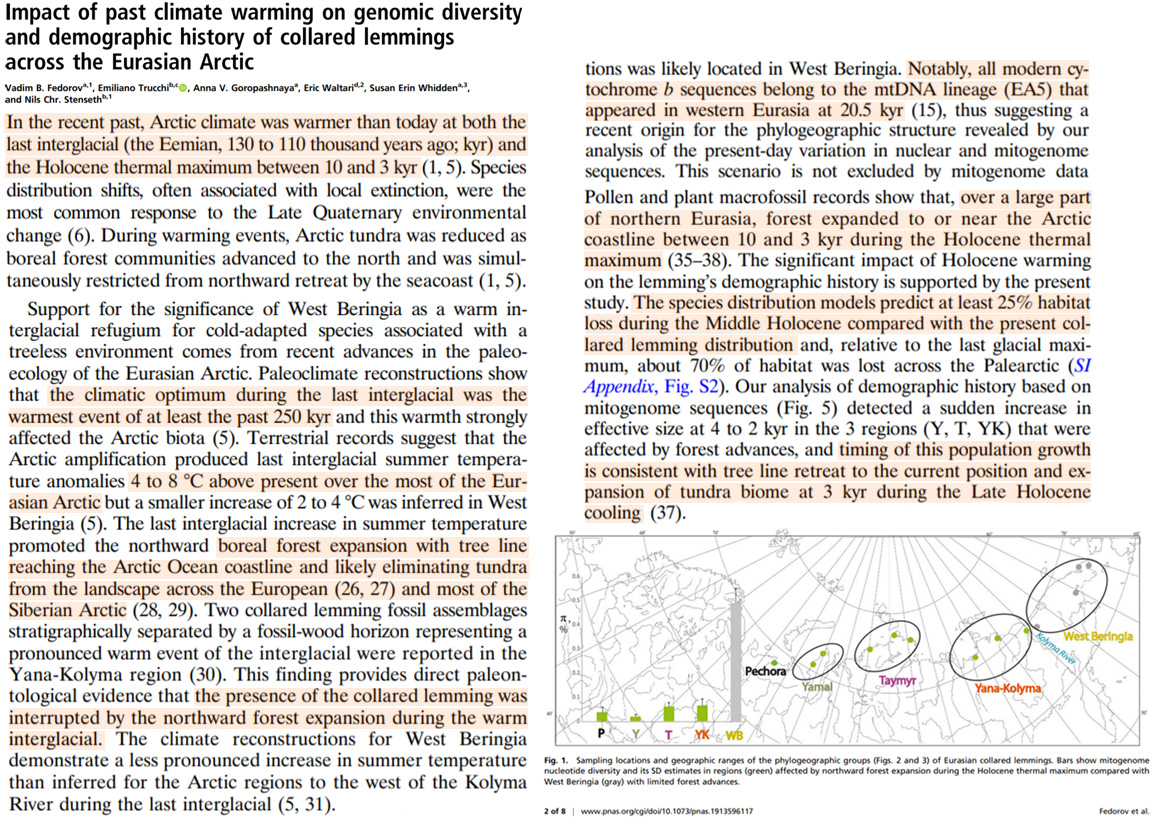
Image Source: Fedorov et al., 2020
5. Rybczynski et al., 2013 Giant camels and horses were hedged by plants, forests, and wetlands in a balmy High Arctic until at least the late Pleistocene (~79k yrs ago). CO2 ranged from 190 to 280 ppm back then (Pleistocene) and averaged about 300 ppm during the Pliocene, but yet the Arctic climate was 18.3°C warmer than today.
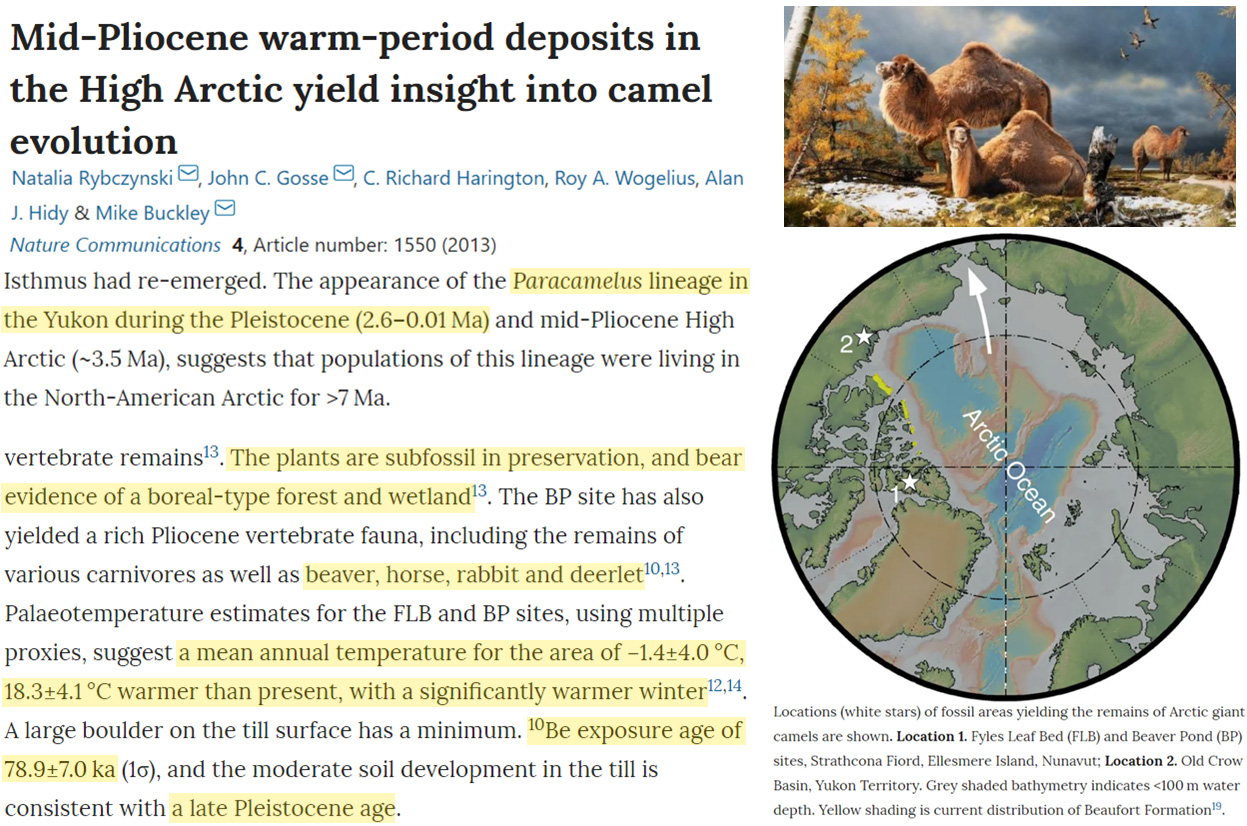
Image Source: Rybczynski et al., 2013
6. Fletcher et al., 2019 From 2 to 4 million years ago, as CO2 pivoted around 300 ppm, the Arctic was 15-22°C warmer than it is today.
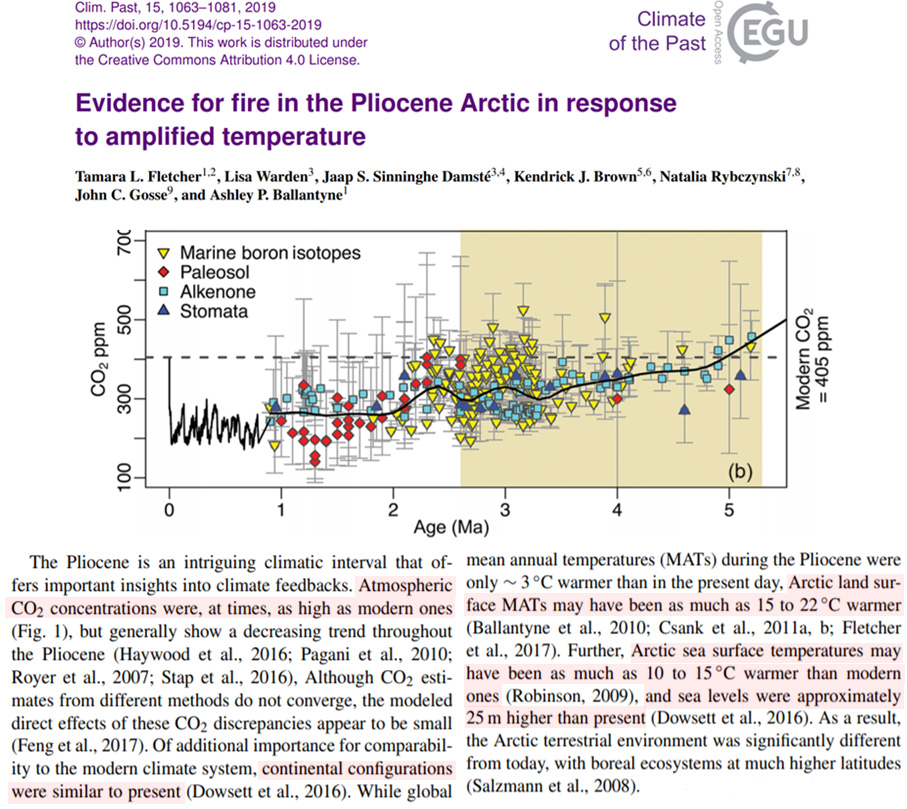





Merci pour cet article très complet.
I find this interesting.
Other than Milankovitch cycles, I think climate prediction is impossible because we don’t understand the nature of the coals we’re standing on.
http://phzoe.com/2020/03/11/40-years-of-climate-change/
Try oil and you are almost there.
NOT.
[…] über Dwarf Mammoths, Giant Camels, And Warmth-Demanding Plants Point To A 6-22°C Warmer-Than-Today Arcti… […]
Archeological sites from Peary Land at the northern-east of Greenland, that is now sea-ice-bound all year, suggest human occupation at a number of times from around the 3rd Century BC.
There is an umiak recovered from Peary Land by Eigil Knuth in the Greenland National Museum Copenhagen that has been radiocarbon dated to around the 15th century AD.
http://pubs.aina.ucalgary.ca/arctic/Arctic5-1-17.pdf
Correction: that should be ‘from around the 3rd millennium BC’.
There is a line on the map of our globe above which even cold-adapted plants do not grow. That’s due to a lack of sunlight, not cold temperature. Evidence shows forests and abundant wildlife in the arctic. In order for those to have thrived then there must have been more sunlight. It’s quite clear to me that the axis of Earth would have to have been markedly different and that would account for the higher temperatures.